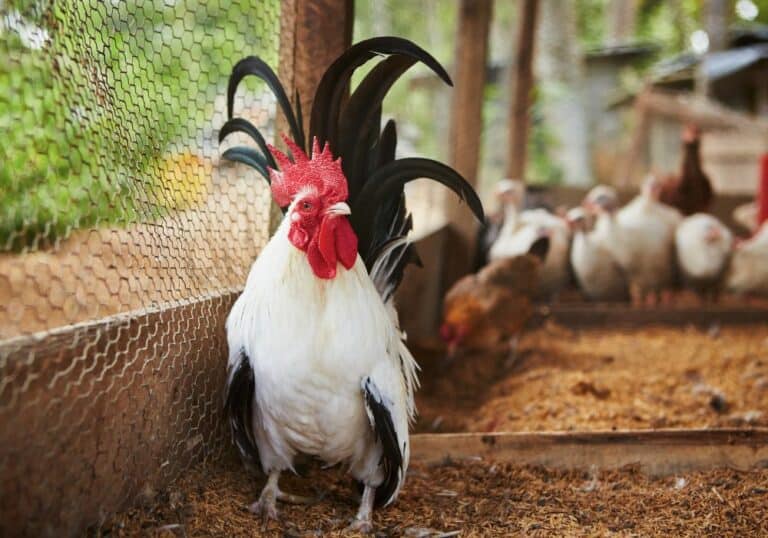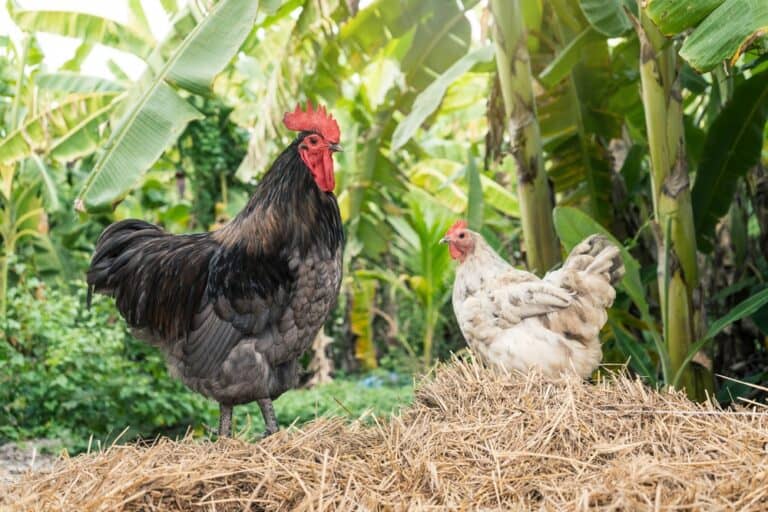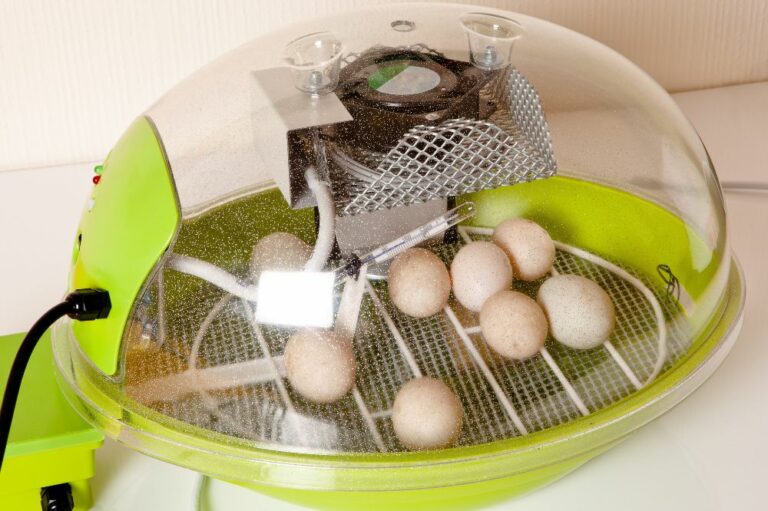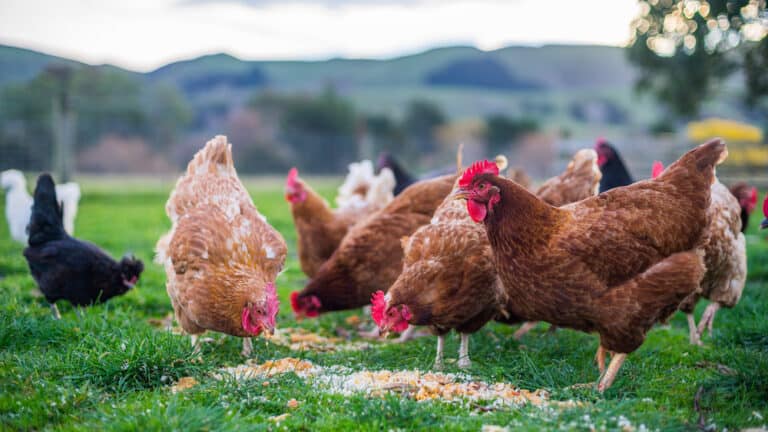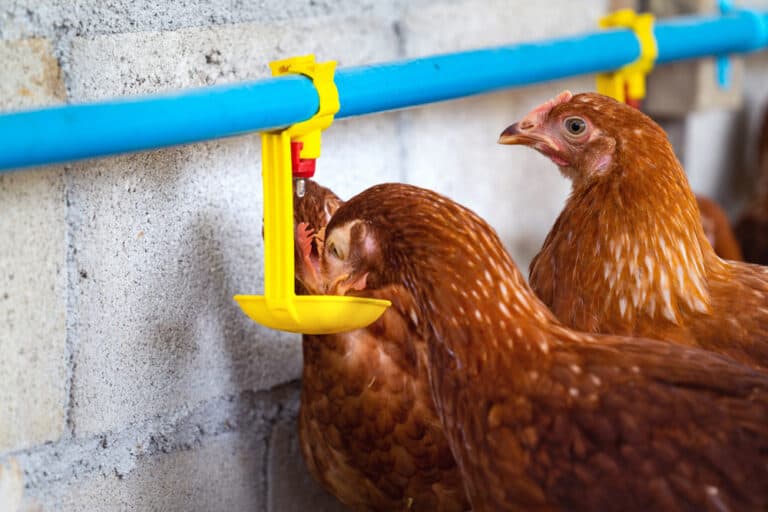The question of how many nesting boxes per chicken has plagued many poultry farmers. Poultry birds need a safe, private, and comfortable place to lay their eggs, hence the need for nesting boxes.
So, whether you and your family get your daily protein from the eggs your backyard chickens lay or you are a chicken farmer looking to maximize profit and ensure that the hundreds to thousands of eggs that your chickens lay are easy to retrieve and damage-free, a good rule of thumb is to provide one nesting box for every three chickens. For brooding and hatching purposes, however, one chicken per nesting box is recommended.
In this article, we’ll discuss all there is to know about choosing chicken nesting boxes. The article will cover the appropriate number of nesting boxes per chicken, how to choose and build a nesting box, and how to maintain your chicken’s nesting boxes properly.
How Many Nesting Boxes Do You Need for Chickens?
As stated earlier, we recommend one nesting box for three chickens. This is because even if you can afford to build nesting boxes for every chicken you own, these birds are bound to pick a favorite box and will only want to lay in that box. Apart from this, it is also impossible for your girls to lay eggs every day.
So, one chicken box for every 3 chickens is not only the right move, but it is also the most economical. If you have more chickens, say eight to ten, then consider increasing the number of boxes to at least 3, although it is possible that out of the three, they would use only two.
For a farmer with 12-15 chickens, 5 nesting boxes will be more than enough, while if your flock is as much as 20 – 25, then increasing the number of nesting boxes to 7 will suffice.
How to Choose a Good Chicken Nesting Box?
Now that you know how many nesting boxes you should have if you have a flock of chickens, it’s time to show you how to choose an excellent nesting box for your hens.
1. Choose Appropriate Nesting Box Materials
Start by ensuring that whatever nesting box you choose for your hens to lay their eggs in is made of the best materials. Although wood is quite popular due to its low fabrication cost, we’ve found that metals and plastic are the best to use as they are non-porous materials.
Unlike wood, plastic is not subject to moisture damage and attack from tiny insect pests. Also, they are easy to clean and will not absorb the chemicals used in cleaning them like wood would.
2. Ensure the Nest Boxes are the Right Size for the Chickens
Next, ensure the nesting box is the right size for your chicken. Although 12 x 12 x 12 inches is the recommended standard, this dimension depends on the breed as this determines the size of your chickens.
For larger chickens like the Orpingtons, you should consider boxes that are at least 14 x 14 x 14 inches in size. If your chicken breed is larger than the Orpingtons, you should make sure your box is up to 20 x 20 x 20 inches.
3. Ensure the Nesting Box is Safe from Predators
Once you’ve chosen the right size nest boxes, you should ensure that the box can keep predators out. This means the box should be away from animals and, of course, human predators who might be interested in stealing the eggs.
4. Choose Suitable Nesting Box Bedding Material
How can you choose suitable bedding? This is a popular question among chicken keepers.
Suitable bedding is thick or deep to prevent the eggs from breaking when laid. Some suitable bedding materials include pine shavings, straws, nesting box pads, grass clippings, or any other wood shavings.
Hay is also one option many poultry farmers use; however, due to its ability to form mold, it has been tagged as dangerous to chickens’ health by poultry enthusiasts. Also, avoid cedar shavings, as they are known to be poisonous when ingested.
How to Get Your Chickens to Use Nesting Boxes
People often need to remember that apart from choosing the correct box, getting the hen to do its business in the box is another tricky mission. A good nesting box that is ignored means that the chickens are laying their eggs somewhere else. So, how do you get the chickens to use the box?
Choose the Right Location
The best location for nesting boxes should be above the ground (about 1 -2 feet), quiet, clean, sheltered, and easy to reach for the chicken as they love their privacy. If your chicken breed is like the silkies, which are poor flyers, consider lowering the box by a couple of inches or providing them with a ramp.
Next, ensure that the nesting box is placed in a location with less light than others. An excellent way to achieve this is by using nesting box curtains. You should also ensure you only expose your birds to free-ranging ones once familiarized with the nesting box’s location and purpose.
Additionally, if you discover that a chicken keeps laying eggs in the wrong place, we recommend you block access to that side of the pen or farm.
Finally, if your hen is still not getting it, place fake eggs like a hardboiled egg or a tennis ball in the nesting box; there are several testimonies that this simple trick works.
How to Properly Maintain Your Chicken Nesting Boxes?
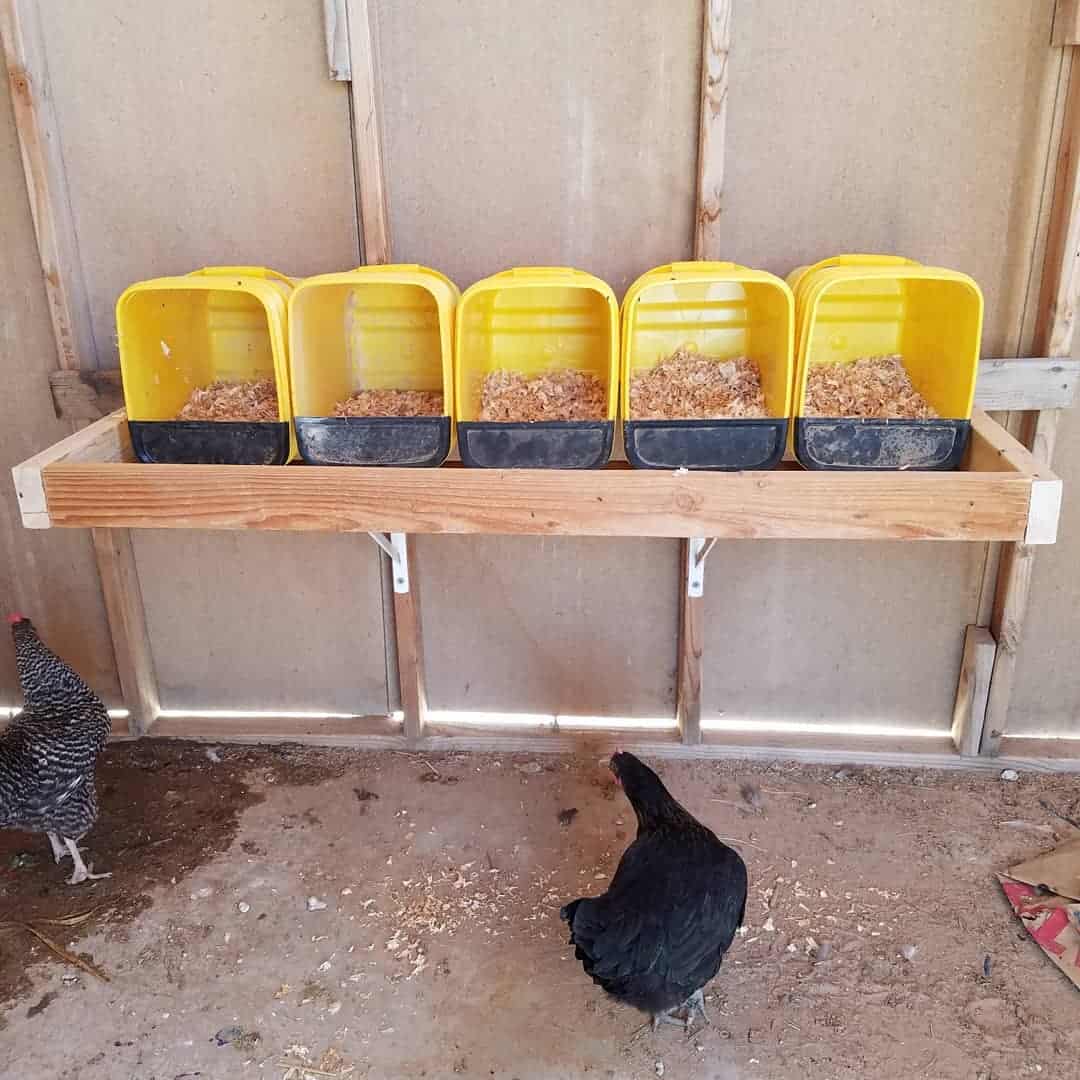
To ensure the chicken nesting box is maintained correctly, here are a few things you must do.
1. Remove the Eggs Promptly
Removing the laid eggs promptly guarantees that you do not have to worry about the chickens eating them by mistake if there is a fight and they get hungry. Also, collecting the eggs immediately means you would have fewer cracked eggs.
2. Clean the Nesting Box Regularly
Another good nesting box maintenance practice is cleaning the box regularly. By doing this, you can be sure that the chickens will use the nesting boxes for their intended purpose, including cleaning the bedding regularly.
3. Do Not Allow the Chickens to Sleep in the Nesting Box
Although you might think it doesn’t matter, discouraging chickens from sleeping in the nesting box is another maintenance practice you should follow. This is because if they sleep in it, the tendency for the nesting box to get dirty more quickly will arise, and when they occupy a box longer than they should, it discourages other chickens from using it.
How can you prevent these hens from sleeping in the nesting box, you ask?
One way is to provide a roosting bar higher than the nesting box; chickens love to sleep above the ground, so they will opt for the higher roosting bar to sleep on it overnight. Alternatively, you could bring the nesting box lower to the ground. Another way is locking or blocking the nesting box late in the afternoon.
Nesting Box for Other Poultry Birds
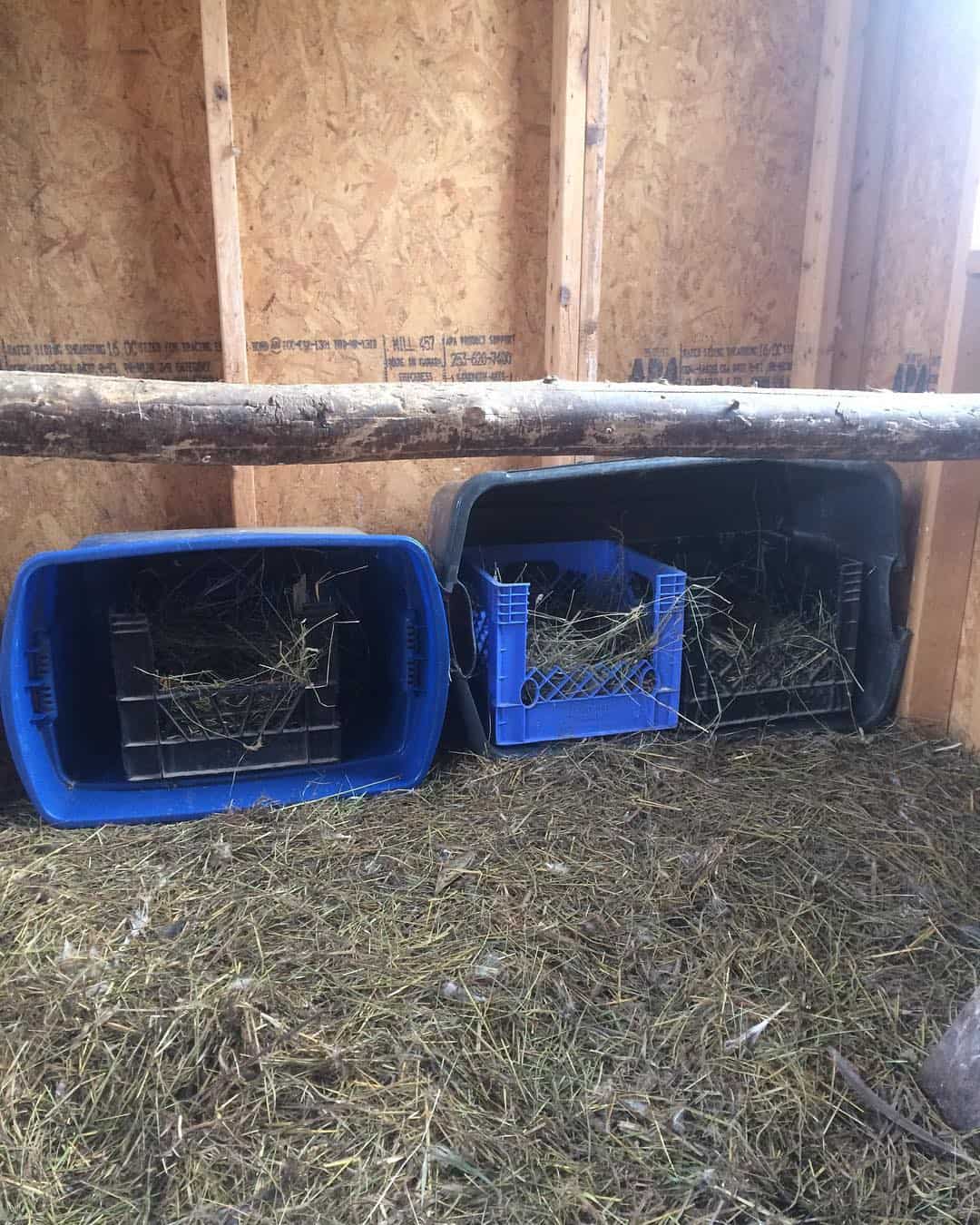
We decided to include this section due to the immense possibility that apart from chickens, you might be interested in getting nesting boxes for your other poultry birds if you get your eggs from them. Here are a few of these poultry birds and information regarding nesting boxes.
Ducks
Eggs produced by ducks are, without a doubt, more nutritious than those offered by chickens, hence why many people are fond of eating them. Their rich yolk is known to contain more antioxidants, omega-3 fatty acids, and vitamin-A than those of chicken. So nesting boxes are essential whether you need the ducks to provide you with eggs daily or want to breed.
When choosing a nesting box for this poultry bird, experts recommend providing one box for 3-5 ducks and ensuring that the nesting box is placed close to the ground as ducks have a hard time climbing heights (excluding the Muscovies, which prefer higher nesting box).
Also, ensure that the nesting box location is dry, clean, and free from high traffic, and you should have no issues getting the ducks to use the boxes.
Finally, regarding size, it is recommended that the box should be within 12-18 inches.
Goose
For geese, you will need a minimum of one cage for 4-8 geese if you plan on collecting eggs daily. However, if you plan on leaving the eggs for natural incubation, each goose will need its nesting box. Also, you want to ensure that the nesting box for the goose is at least 2 square feet and place it in a dry location away from the sun ad rain. The nesting box should also be on the ground.
Final Thoughts
We’ll conclude by reiterating that the number of nesting boxes you need per chicken varies from 2-4, and you must ensure that you adopt proper nesting box maintenance practices. Also, remember to put in measures to prevent the chicken from thinking of the nesting box as a sleeping box.

